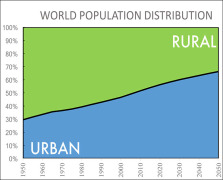Active (Ethernet) vs. Passive (PON) — What's Best for You?
13 Feb 2019
When it comes to delivering networks to support Smart Buildings and applications like CCTV, IPTV and Internet service delivery, there is no doubt the near-limitless bandwidth of optical fiber is of benefit. What is less clear is whether an active or passive technology is better. The reality is that it depends on many factors including the environment, applications being used and who is going to manage or operate the infrastructure. Let’s look at this in a little more detail.
In order to deliver next-generation services to consumers or subscribers, the aging twisted pair infrastructure that had been used for many years was simply not capable of meeting the bandwidth requirements of services like HDTV. Optical fiber with its near limitless bandwidth was an easy choice. Using an active or point-to-point technology, however, would have seen thousands to tens of thousands of strands of optical fiber required from the exchange. Alternately, it would have been necessary to have active equipment in the field from where optical fiber would have been aggregated. Neither of these options was particularly suitable so an alternative technology known as Passive Optical Networks (PON) was developed. PON had the benefit of using small counts of optical fiber from the exchange and then branching out to deliver services to subscribers with passive splitters overcoming the limitations of active Ethernet for this application.
Today the benefits of a single converged network to support all applications within a facility are better understood. The simplicity of managing one set of infrastructure, flexibility to add additional services and lower total cost of ownership is now being seen by organizations that head down this path. With 20% of commercial buildings predicted to be smart or intelligent by 2020, this trend will only increase.
The requirements of services that leverage a converged network are quite different to those of the consumer services seen in “broadacre” environments. Services regularly deployed within commercial buildings include telephony, CCTV, signage, wayfinding, wireless, access control, BMS/HVAC and lighting. These applications often require Power over Ethernet (PoE) to power the endpoint, multicast support to manage the distribution of content, symmetric bandwidth to support content moving in both directions, and a high degree of redundancy due to the critical nature of some services. These are inherent within active Ethernet networks but are not typical of passive networks.
Technology aside, another factor to consider is ownership and operation of the network. Passive networks are typically deployed by a carrier or service provider who then takes complete responsibility for the infrastructure and service delivery. When adds, moves or changes are required, this is undertaken by the organization responsible. This is ideal for the delivery of services such as voice, data and telephony to consumers but is less than ideal for building services.
Within commercial buildings there is often a need for the facility owner or manager to reconfigure the network to support new services or add new endpoints. This level of flexibility is simply not available when the network is operated or managed by a carrier or service provider and would generally incur additional costs. This would not occur with an active network that is managed by the facility.
Allied Telesis International BV
Website
T: 01793 501416
11 Pine Court
Kembrey Park
SN28AD
Swindon, Wiltshire
United Kingdom

Product News
ICT: The Fundamental Enabler for Smart Cities
The world’s cities are relentlessly growing. Since the 19th century, there has been a steady flow of people from rural areas into the urban centers of the world. According to the United Nations Department of Economic and Social Affairs, the global percentage of urban population was approximately 30% in 1950 and has surpassed the 50% mark some time in 2008. It is predicted that by 2050, 64% of the developing world and 86% of the developed world will be urbanized.

Product News
No-Compromise Wi-Fi
The wireless edge of the network has become ubiquitous, and so too have our expectations of a reliable and secure connection. As we have become used to the convenience of connecting wherever and however we want, we tolerate the flaws in a typical Wi-Fi connection – pauses in downloads, occasional drop-outs where we must re-connect, and lengthy waits as we try to join a public Wi-Fi network. For our personal browsing, we make a conscious compromise between convenience and reliability because apart from being frustrating at times, no real harm is done. But in a business environment, reliable wireless connectivity can’t be a compromise for critical operations, especially where it can be the difference between life and death.


